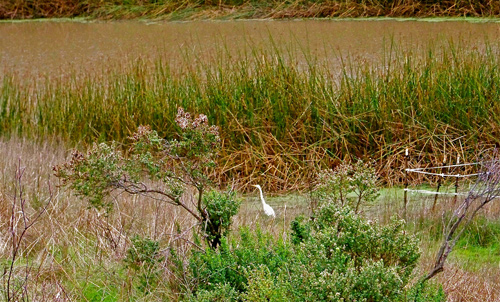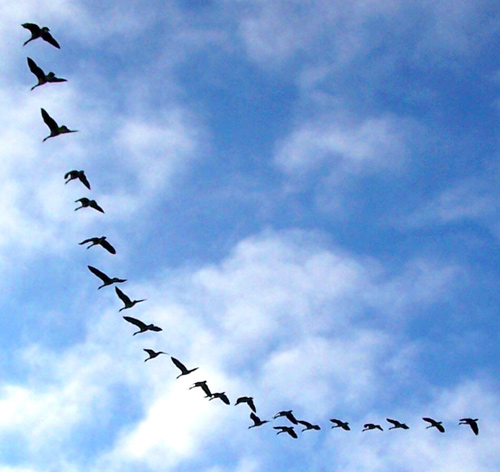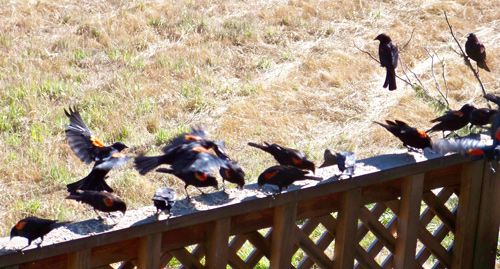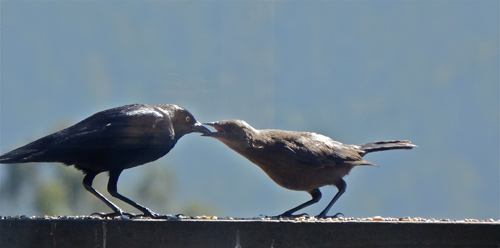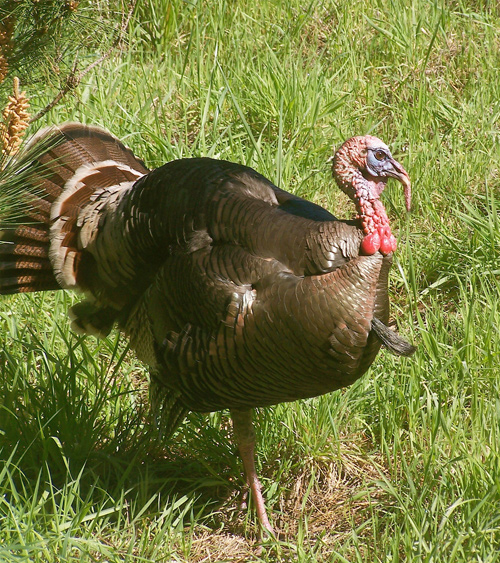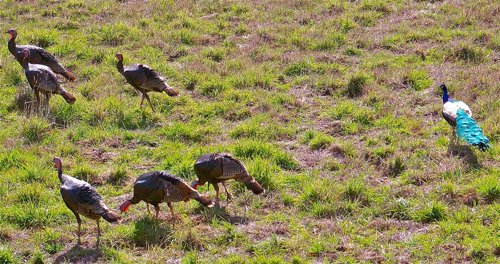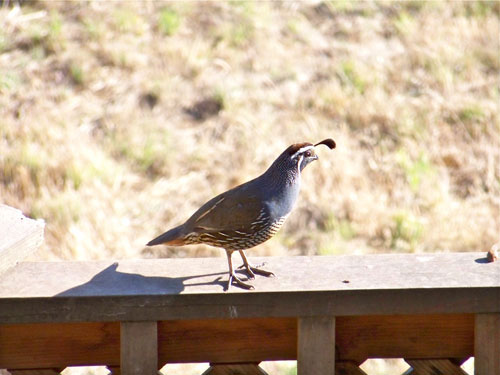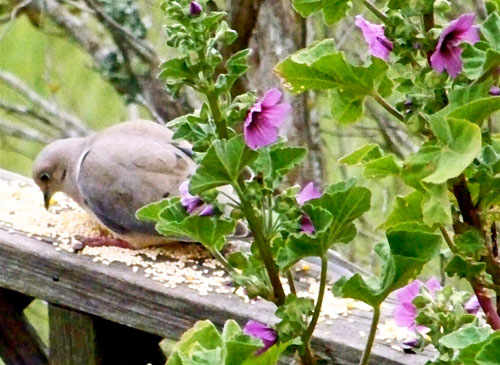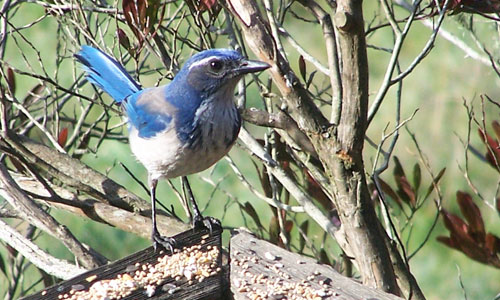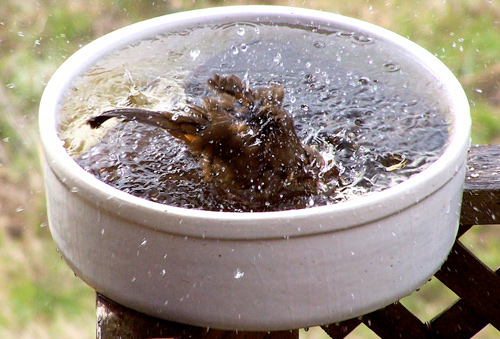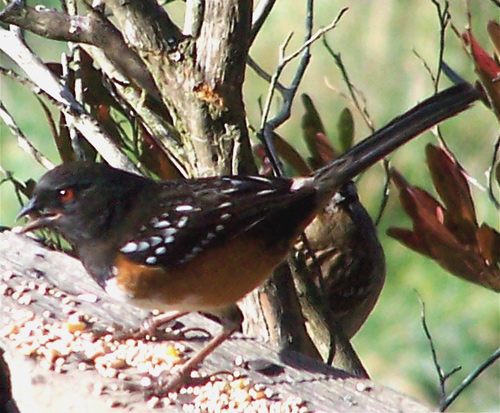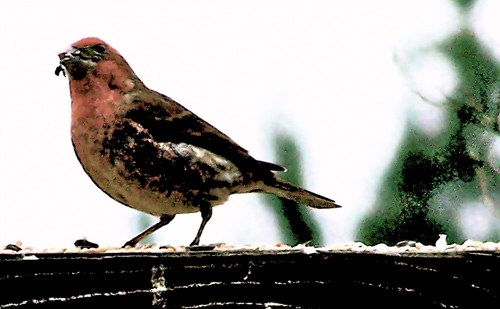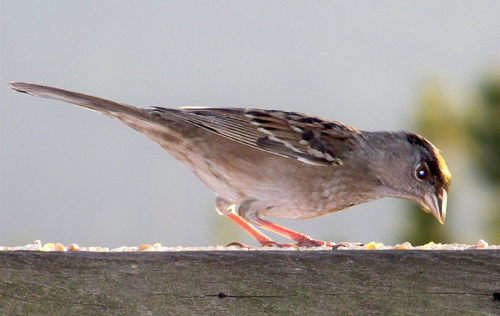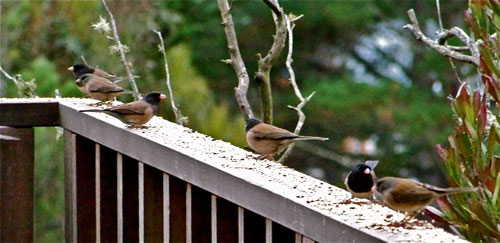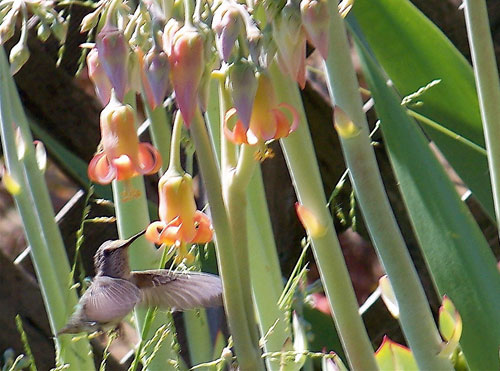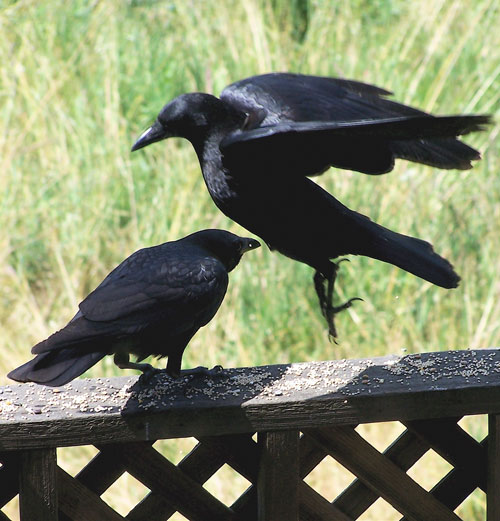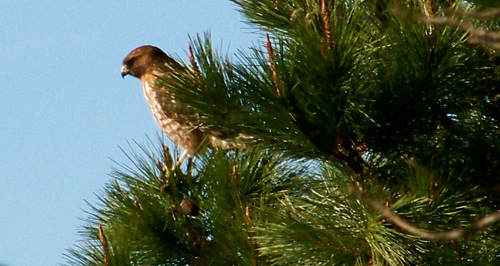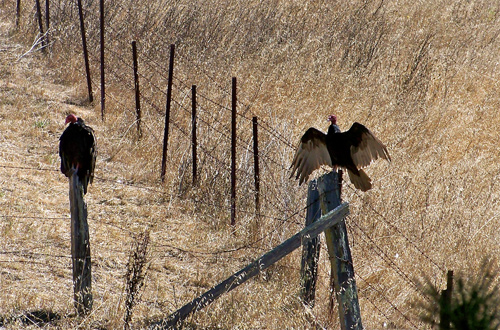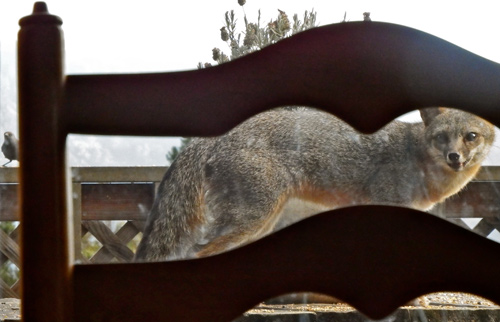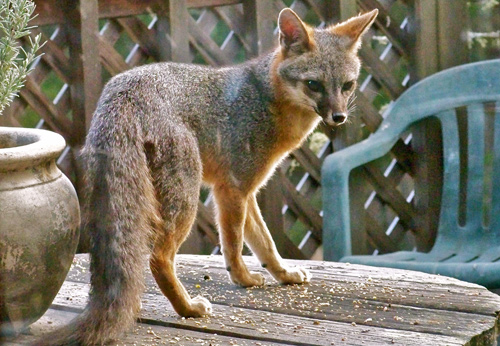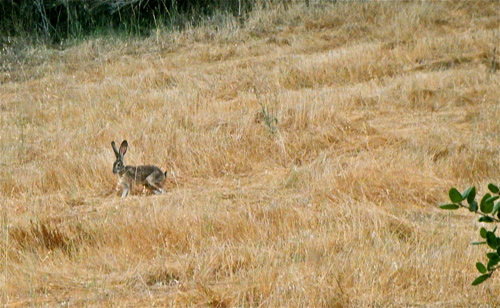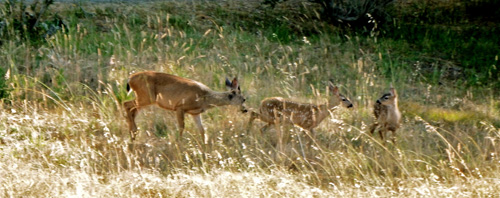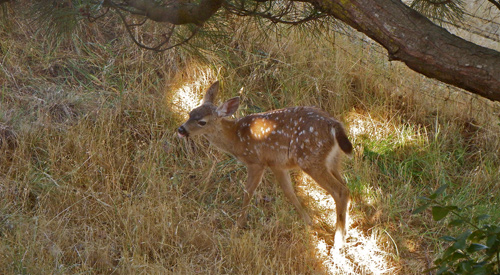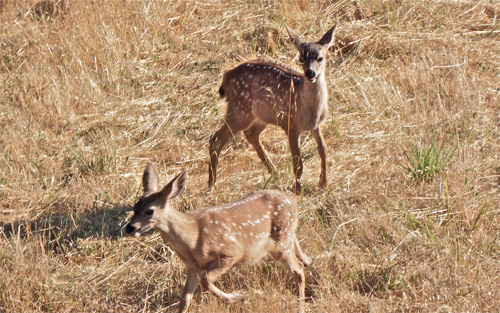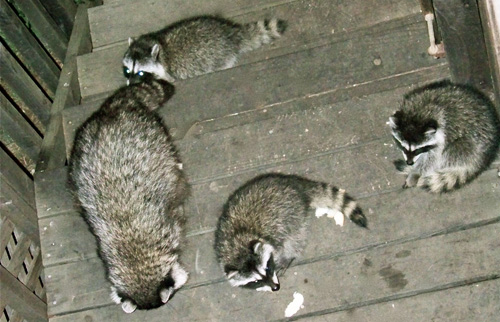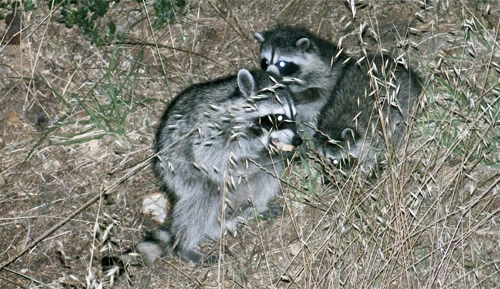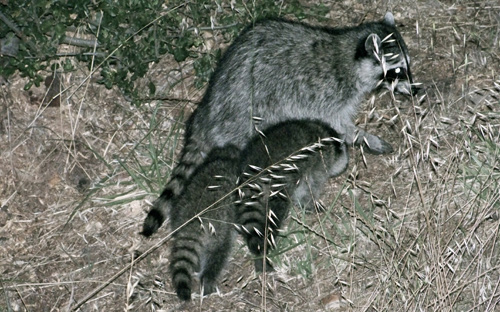Here is a gallery of my bird photography, as was promised two weeks ago. The photos were all shot at Mitchell cabin or around it.
One reason Mitchell cabin gets quite a variety of birds and other wildlife is that its fields come within a few feet of a neighbor’s stockpond, where numerous creatures show up daily to drink or hunt. Here a common egret wades through shallow water, looking for frogs, small fish, or insects.
While it’s hunting, a great blue heron will repeatedly stand motionless and then use lightning-fast strikes with its sharp bill and long neck to catch gophers in Mitchell cabin’s fields or frogs and fish in the pond.
The cabin is under the commute route for Canada geese which travel daily between the Point Reyes National Seashore and the Marin French Cheese Factory’s ponds in Hicks Valley. It’s easy to tell when they’re coming; they honk as much as Homo sapiens commuters stuck in traffic.
A flock of tri-colored blackbirds swoop down onto the deck railing when Lynn or I spread a line of birdseed along it morning and evening. Many of the blackbirds nest in reeds at the pond.
Even after they’ve grown old enough to feed themselves, young blackbirds for awhile still want to be fed by their parents. Once in awhile the parents do oblige them, but over a few days, they wean their youngsters. (Photo by my partner Lynn Axelrod)
A tom turkey struts his stuff. In 1988, a hunting club working with the State Department of Fish and Game introduced non-native turkeys into West Marin on Loma Alta Ridge, which overlooks the San Geronimo Valley. By now there are far more turkeys than turkey hunters, and their flocks have spread throughout West Marin.
A little more than a year ago, a lone peacock showed up and soon began hanging out with a flock of wild turkeys. Months later, he can still be seen bringing up the rear as the flock hunts and pecks its way across the fields.
A male quail. Male and female quail both have crests. The males’ crests are black, the females, brown.
The Eurasian collared dove is a native of the Middle East that spread across Europe in the 20th Century, according to the Audubon Society. In 1974, it was accidentally introduced into the Bahamas. In the 1980s, the doves discovered the US was only a short flight away and began taking trips to Florida. In less than 30 years, the doves have spread throughout most of this country.
California western scrub jays show up immediately when we put seed on the railing.
A California towhee freshens up in the birdbath on the deck.
Rufous-sided towhees are among the most colorful birds that show up for birdseed.
A purple finch chews a sunflower seed it found among other seeds on the railing.
The presence of golden-crowned sparrows is often announced by their song, which sounds like Three Blind Mice in a minor key.
Oregon juncos keep a close eye on Mitchell cabin’s deck, and it’s never long after we put out birdseed that they begin showing up. They’re less skittish than most other birds and will sometimes begin pecking seeds off the railing before we’ve departed.
A female hummingbird. Hummingbirds drop by for drinks whenever we have flowers in bloom.
American crows, which are native to North America, are considered intelligent birds. Here, for example, they demonstrate their mastery of jitterbug.
A crow skins its caterpillar dinner in the birdbath.
Redtailed hawks dine on reptiles, small mammals, and birds. Their call is a two-or-three second scream which trails downward. Redtails are monogamous and typically reach sexual maturity at age two or three and can live to age 21 in the wild.
When I spotted this great-horned owl in a tree 200 feet or more from the cabin one evening, I decided to try photographing it. However, the light was so low that when I triggered the shutter, the little flash on my old-fashioned Kodak flipped open and fired. To my amazement, the flash was reflected in the owl’s eyes despite the bird’s distance from me. With eye shine (see tapetum lucidum) like that, it’s no wonder owls can see well in the dark.
Two buzzards warming themselves in the morning sun.
This gallery doesn’t include all the birdlife around Mitchell cabin, of course, but it’s a sampling of our avian neighbors. They’re not the only reason I enjoy living where I do, but they’re a big part of it.

